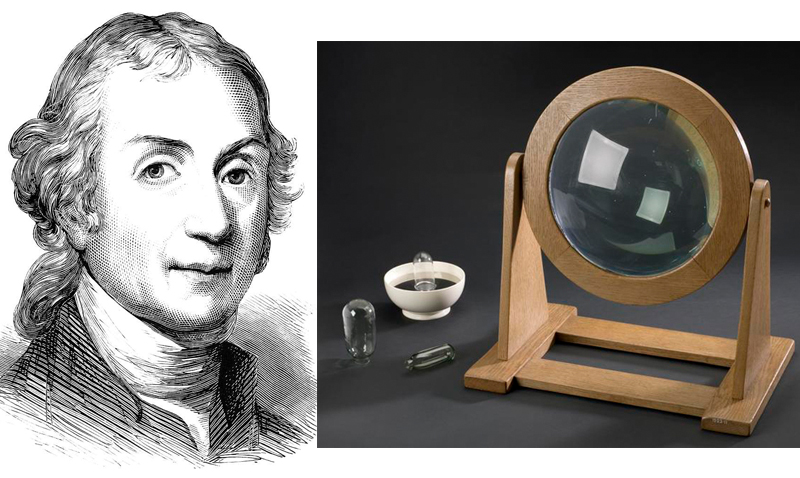
Oxygen & other gases
Yorkshireman Joseph Priestley (1733-1804) was a skilled experimental chemist, among other occupations, and in 1774 he made some extraordinary discoveries by heating red mercuric oxide using apparatus he had designed himself. He isolated no less than ten gases (‘airs’), including oxygen, although he named it ‘dephlogisticated air’, as per theories of the time. Their modern names are:-
- Oxygen (O)
- Nitrogen (N) – ‘phlogisticated air’
- Nitric Oxide (NO)
- Nitrogen Dioxide (NO2)
- Nitrous Oxide (N2O)
- Hydrogen Chloride (HCl)
- Ammonia (NH3)
- Sulphur Dioxide (SO2)
- Silicon Tetrafluoride (SiF4)
- Carbon Monoxide (CO)
The following year, Priestley generously showed his method to Antoine Lavoisier in Paris and it was the Frenchman who developed the accepted theory on ‘oxygen’, the name he gave it. This would revolutionise the field of chemistry. Meanwhile, Priestley remained stubbornly attached to the ‘phlogiston’ (Greek: burned) theory purporting to explain combustion and corrosion, even though it was superseded by 1800.
Nevertheless, Priestley made significant progress in the understanding of electricity and chemistry, and published six volumes entitled ‘Experiments and Observations on Different Kinds of Air’, for which he was awarded the prestigious Copley Medal. Believing in the health benefits of natural elements, he strove to apply them in practical ways to improve sanitation and hygiene.
(Images LtoR: Joseph Priestley / Public domain, reproduction of Priestley’s apparatus by Science Museum Group Librarian at Wikimedia Commons / CC BY-SA 4.0)
